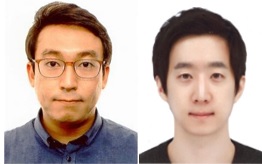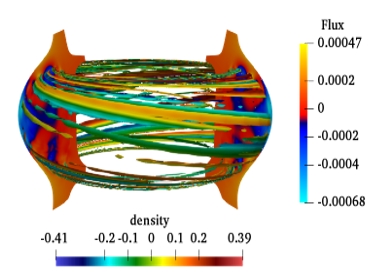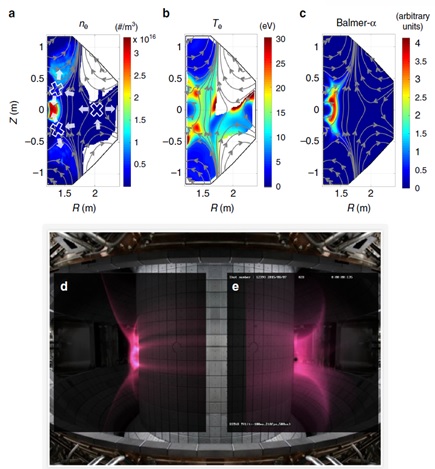- About
- Academics
-
Undergraduate Programs
- Civil and Environmental Engineering
- Architecture and Architectural Engineering
- Mechanical Engineering
- Industrial Engineering
- Energy Resources Engineering
- Nuclear Engineering
- Materials Science and Engineering
- Electrical and Computer Engineering
- Naval Architecture and Ocean Engineering
- Computer Science and Engineering
- Aerospace Engineering
- Chemical and Biological Engineering
-
Graduate Programs
- Civil and Environmental Engineering
- Architecture and Architectural Engineering
- Mechanical Engineering
- Industrial Engineering
- Energy Systems Engineering
- Materials Science and Engineering
- Electrical and Computer Engineering
- Naval Architecture and Ocean Engineering
- Computer Science and Engineering
- Chemical and Biological Engineering
- Aerospace Engineering
- Interdisciplinary Program in Technology, Management, Economics and Policy
- Interdisciplinary Program in Urban Design
- Interdisciplinary Program in Bioengineering
- Interdisciplinary Program in Artificial Intelligence
- Interdisciplinary Program in Intelligent Space and Aerospace Systems
- Chemical Convergence for Energy and Environment Major
- Multiscale Mechanics Design Major
- Hybrid Materials Major
- Double Degree Program
- Open Programs
-
Undergraduate Programs
- Campus Life
- Communication
- Prospective Students
- International Office
News
SangKyeun Kim and Min-Gu Yoo, Graduates of the Department of Nuclear Engineering at SNU College of Engineering, Received the Young Researcher Award of the Association of Asia Pacific Physical Societies
-
Uploaded by
관리자
-
Upload Date
2021.09.24
-
Views
102
SangKyeun Kim and Min-Gu Yoo,
Graduates of the Department of Nuclear Engineering at SNU College of Engineering, Received the Young Researcher Award of
Graduates of the Department of Nuclear Engineering at SNU College of Engineering, Received the Young Researcher Award of
the Association of Asia Pacific Physical Societies
- Awarded for the categories of recipients under 30 and those under 40, respectively
- Awarded to a researcher who has made significant contributions to specific research fields of plasma physics
- Awarded to a researcher who has made significant contributions to specific research fields of plasma physics

▲ From left, Dr. SangKyeun Kim and Min-Gu Yoo
Seoul National University's College of Engineering (Dean Byoungho Lee) announced on September 7 (Tuesday) that Dr. SangKyeun Kim and Min-Gu Yoo, who graduated from the Department of Nuclear Engineering, were awarded the Young Researcher Award by the Division of Plasma Physics of the Association of Asia Pacific Physical Societies.
The Association of Asia Pacific Physical Societies' Young Researcher Award is given to young researchers under the age of 30 and 40 who have made significant contributions to various specific research fields in plasma physics, and Dr. SangKyeun Kim received the award for those under the age of 30 while Dr. Min-Gu Yoo for those under the age of 40.
Dr. SangKyeun Kim and Dr. Min-Gu Yoo were selected as winners in recognition of their achievements in researching the plasma interface instability of the tokamak, a nuclear fusion device and revealing the fundamental principle of the initial start-up phenomenon, respectively, under the guidance of Professor Yong-Su Na of the Department of Nuclear Engineering.
The interface instability that occurs in nuclear fusion plasma can cause fatal damage to the devices that trap high-temperature plasma and so the Tokamak applies a three-dimensional magnetic field to the plasma to suppress it. However, the mechanism of suppressing interface instability through this method has not been elucidated so far.

▲ The results of the interface instability simulation within the Tokamak device including a 3D magnetic field, carried out by Dr. SangKyeun Kim and Professor Yong-Su Na
Through three-dimensional non-linear simulations and experiments with domestic KSTAR tokamak devices, Dr. SangKyeun Kim and Professor Yong-Su Na's research team broke away from the conventional ideas of the academic world that are limited to linear interpretation and revealed that the nonlinear interaction between plasma and boundary instability according to the application of the three-dimensional magnetic field plays a decisive role in controlling the instability phenomenon.
In addition, based on this study, the conditions for applying a three-dimensional magnetic field for stable boundary instability control were presented, and is expected to greatly contribute to the design and optimization of future nuclear fusion devices such as the International Thermonuclear Experimental Reactor ITER in which the EU, the United States, Japan, Russia, China, India, and South Korea are participating in.
Meanwhile, the research results were published in the IAEA International Atomic Energy Agency and Nuclear Fusion, which are prestigious societies in the field of nuclear fusion.
Currently, Dr. SangKyeun Kim has been a postdoctoral researcher at Princeton University in the United States since 2020, and is conducting physical research on the effect of three-dimensional magnetic fields on the nuclear fusion plasma structure.

▲ Comparison between 3D simulation results and KSTAR experiment results
developed by the research team of Dr. Min-Gu Yoo and Professor Yong-Su Na
In addition, the research team of Dr. Min-Gu Yoo and Professor Yong-Su Na revealed the contradiction of the existing traditional theories that have been widely used for decades in the nuclear fusion start-up research and through self-developed three-dimensional simulations and experiments with domestic KSTAR tokamak devices, demonstrated for the first time that the plasma generates a strong electric field by itself and that the resulting turbulent transport determines the initial plasma formation.
As a new paradigm of startup scenario design, it is expected to have a great ripple effect in designing and optimizing the initial startup scenario of future nuclear fusion devices such as ITER by presenting a phase analysis methodology that can easily analyze complex electromagnetic field structures.
After obtaining his Ph.D from Seoul National University, Dr. Min-Koo Yoo has been working as a postdoctoral researcher at the Princeton Plasma Physics Laboratory in the United States since 2018, conducting research on the physical mechanism of nuclear fusion plasma decay.